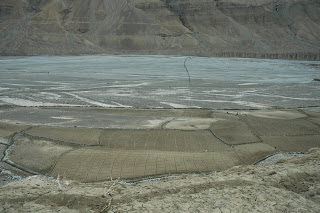After my last post on trekking in Silent Valley, I got a few requests to put up some more details. Here the details:
Stay: I stayed in a resort called "Malleswaram Lodge" owned by a person called Dominic. The website is being updated http://www.malleeshwaram.com/ . According to Dominic, the website will be up and running in a day or two. You can contact Dominic at : +91-9961544663. Here is a blog link to their site: http://malleeshwaram.wordpress.com/ and http://malleeshwaram.blogspot.in/ (I f you looking to go to other places in Kerala, I would suggest Manoj, of Bumble Bee Holidays, for arranging your trips to Kerala. I have taken his help a couple of times. I find him very professional and helpful. He can be reached at: +91-8147087770.)
The resort we stayed in was an 'Eco Friendly' resort. Which meant there was no electricity at all. The resort was on the edge of the jungle. We we step out, on our left the ground dropped into a valley. It is a thick forest, so you cannot see the valley. There are only hurricane lamps in the room. No bulbs or fans. The 'hut' is made of mud. It would have been a real tribal thing had we not had a modern toilet !!! The dining area is also very dimly lit and you need to carry torches with you. The nights, if it is cloudy or nearing new moon day, will be pitch dark. I guess it will be wonderful on full moon days but when we went there was a cloud cover so the darkness was intense. A lovely experience. Dominic has only 3 cottages, so it is quite exclusive and very very quite.
Drive: The resort was located in a place called 'Attappadi'. This is on the road from Mannarkad to Coimbatore. From Bangalore, you can approach Silent Valley from two ways. You can go via Coimbatore and then proceed from there to Silent Valley. The approach is to go to Mysore, on to Bandipur, Gudalur and through Nilambur to Mannarkad. From Mannarkad, Silent Valley is less than 20kms away. While going I went the Mysore way because I wanted to avoid driving through Coimbatore. Also because I love driving through Bandipur forest. We sighted a lone elephant along the way. Also the usual deers and monkeys. We avoided going into Nilambur by taking a village road before Nilambur and reached Mannarkad.
Silent Valley: The Silent Valley National park has limits to the number of people it allows inside the park per day. So you need to take prior permission. Dominic did this for us. You are taken in a jeep safari inside the park. Animal sightings are rare. We just saw one Malabar Squirrel and a couple of interesting birds. But I love the forest so I was quite happy with the drive. If you are interested in animal sighting, be prepared to be disappointed !!! If you like the forest experience, you will not be disappointed. In every jeep compulsorily has guide. Our guide's job was to sit as silent as possible. Even when I asked him something, the driver would answer!!!
If you are a person who wants to see many places, then it is better to stay in Palghat and make a trip to Silent Valley and get back. Because there is nothing else than Silent Valley National Park in this place. As we did you can do a trek in some other part of that region. But if you are not in a position to trek, Palghat or Coimbatore may be the best place of stay.




















































